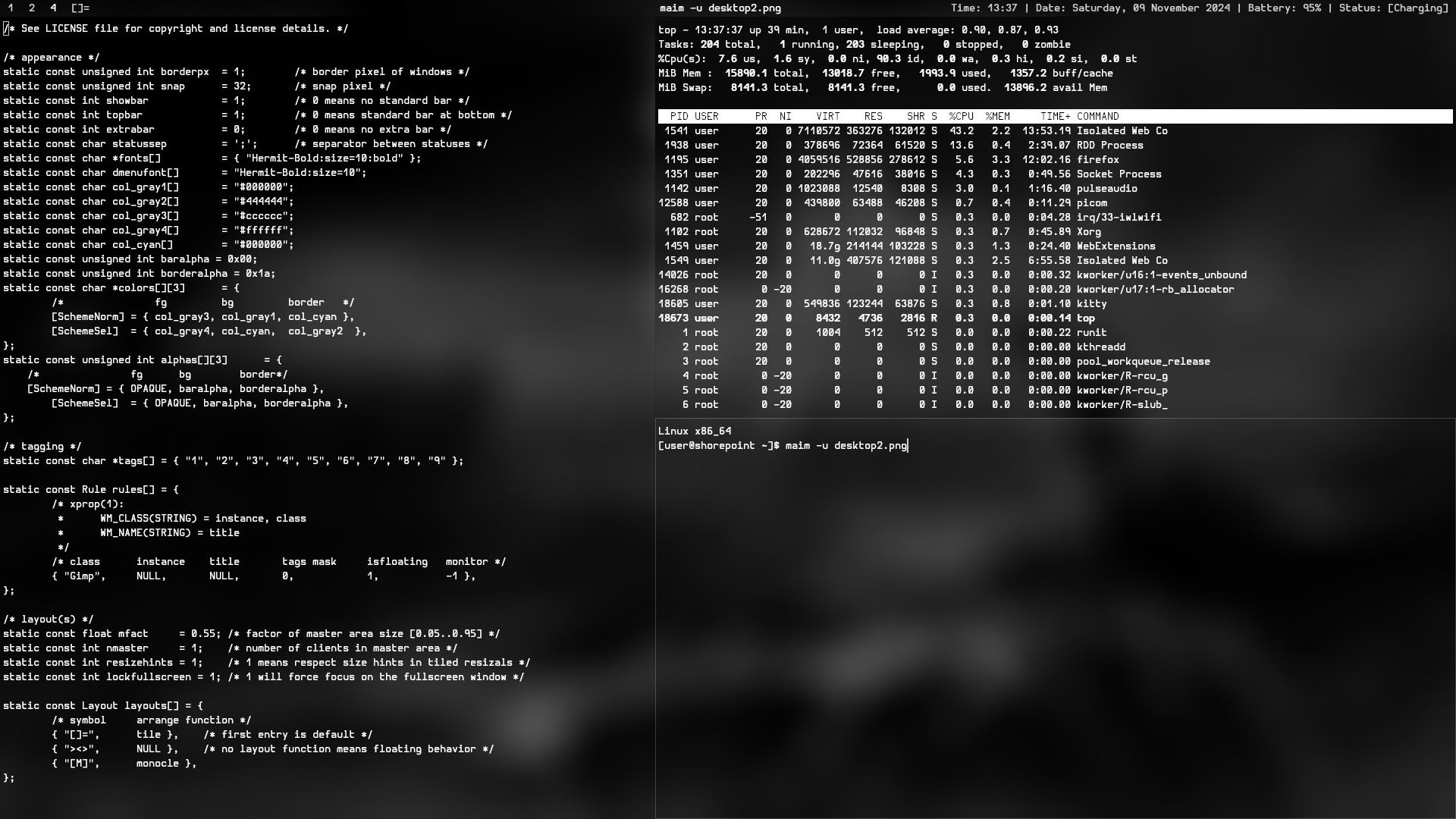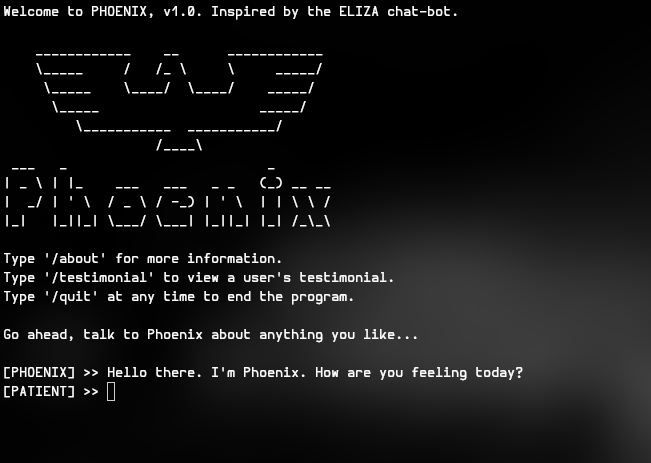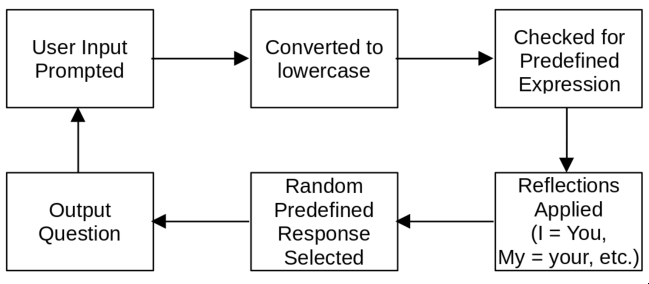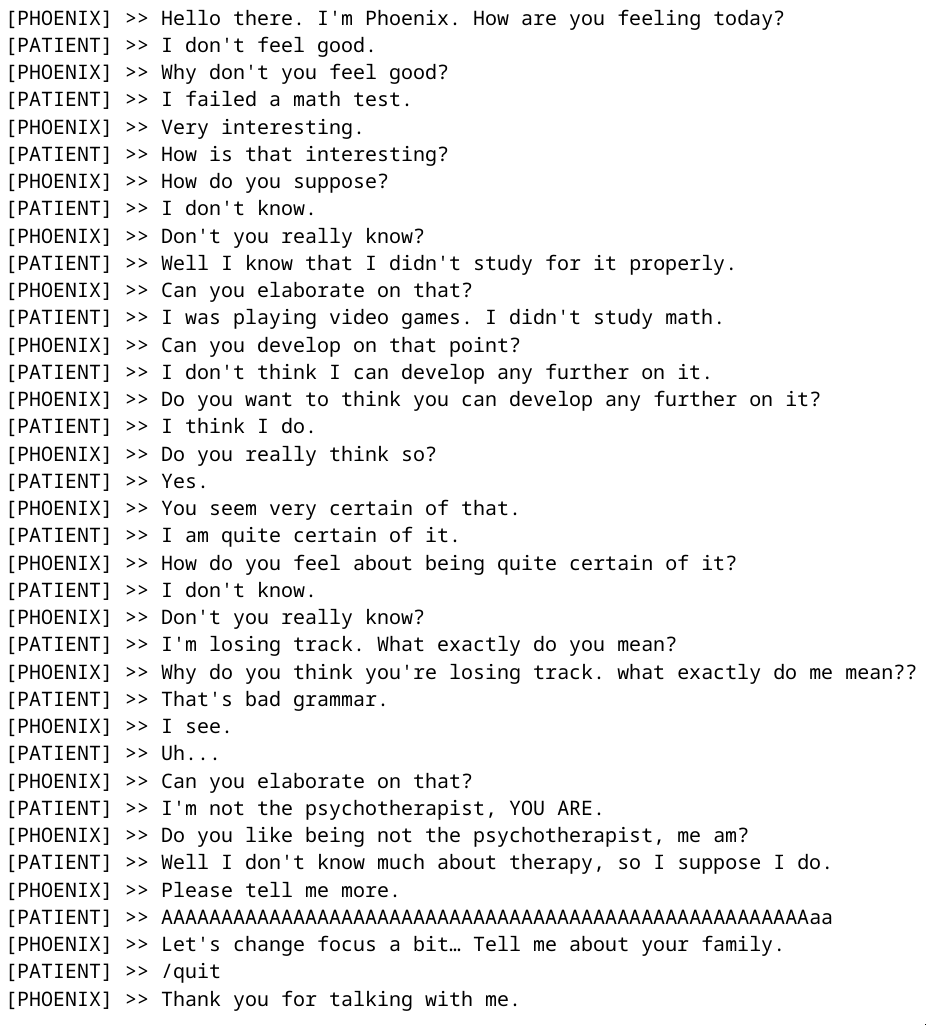

projects/
"When in doubt, use brute force." - Ken Thompson
This page contains links to projects on my Git page. They're explained in more detail over here.
This is my personal build of Suckless' Tools Dynamic Window Manager (DWM).
For those unfamiliar, it's basically a minimalist User Interface for Linux/BSD Operating Systems. It has a few patches installed, Like transparency, hidden empty tags and a centered window title, along with some personal customization, such as a keybind to enable/disable the compositor as required.
Note that this build uses The Kitty Terminal Emulator as the default terminal instead of Suckless' st due to some issues I was facing while patching it.
For similar reasons, it uses rofi as the default app launcher instead of Suckless' dmenu. It also uses the Monospace Hermit font and the Picom compositor.
(Alt+X to disable compositing, Alt+Shift+X to enable compositing.)


I'm quite happy with how it's turned out. You're more than welcome to improve on it.
(Abandon hope, all ye who enter here!)
This is Phoenix, a Pseudo-Intelligent Chat-Program intended to be therapeutic for individuals with stress and minor mental health/psychological problems. I created this for my Computer Science project in my final year of High School.
It is basically my own version of Joseph Weizenbaum's ELIZA, Written entirely in Python, using the random and regular expression libraries. It is based on these similar programs.
How it works is, you "talk" to the program about whatever's bothering you. It poses whatever you told it, back to you in the form of a question with slightly different wording.
The idea is that through indirect self-revelation, you'll eventually find the root of your problems, and maybe also how you can resolve them. This is an approach known as Rogerian Psychotherapy.
The average user might think it's some sort of fancy, high-tech "AI", Though a closer look at the code would reveal the program to be a very primitive LLM or an NLP.
Of course, I was able to smear it all over with lots of abstraction and the use of unnecessarily big words in the project file (Which is also available on the repository) and the examiners were quite happy with it.
Even though Phoenix was good enough to get both me and my classmate (who tagged along and claimed to be too "technologically-challenged" to make her own project) full marks on the project, the program is far from perfect.
I've tried to make the interaction "more human" by adding a large number of responses/statement modifiers, along with more regular expression checks to provide more situation-appropriate responses.
Despite these attempted improvements, me and the beta testers have unanimously concluded that this program is "posessed by unspeakable eldritch horrors from outer space".
It almost always takes the user on, what was described as an "infuriating, agonizing and psychotic fever dream from the deepest, darkest depths of hell", making the user want to throw his computer in the bin.



If you're brave (or foolish) enough to try using it, be prepared to lose your sanity in about 5 minutes. It will run on almost any device that has Python 3 installed. Note that the /testimonial command is not yet implemented, and it probably never will be.
A final word of warning: Whatever you do, DO NOT ANTHROPOMORPHIZE THE PROGRAM. I'm not quite sure what will happen if a user does so, Though it is assumed to result in disastrous consequences.
(Forked from kelseyhightower/nocode)
This is No Code. The world's easiest, most secure and reliable way to develop applications. You write nothing and you deploy it nowhere, allowing for truly limitless possibilities of creation, functionality and scalability.

All programs developed with No Code are guaranteed to be completely bug-free (Because absolutely nothing WILL go wrong if there's absolutely nothing that CAN go wrong).
These programs also feature vast cross-platform compatibility by default, They will be completely functional on all electronic/electrical/mechanical computational devices that currently exist, ever have existed, and ever will exist.